We have much more to do and your continued support is needed now more than ever.
Seven Species that Need You to Leave the Leaves
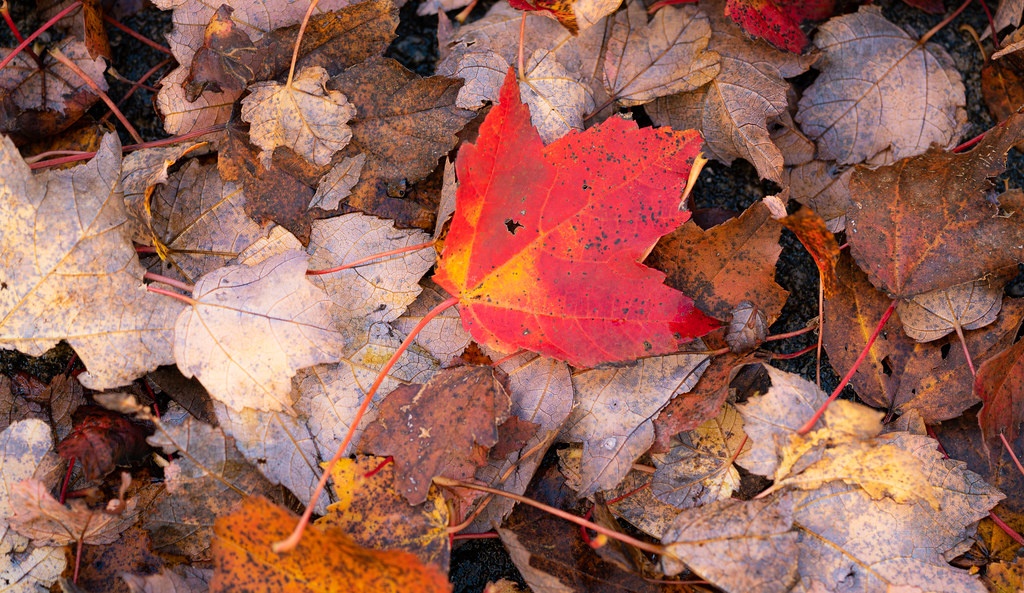
As the hues of autumn give way to winter detritus, many homeowners are quick to discard the fallen leaves suddenly blanketing their yards. But what if we told you that this seemingly mundane layer of leaves serves as a bustling microcosm of life, vital to the survival of many backyard visitors?
From amphibians and reptiles to insect pollinators, birds, and mammals, the leaf layer is more than just nature’s carpet—it’s a sanctuary, a food source, and a protective shield. But these critically important pieces of microhabitat are entirely removed when we throw away the leaves in our yards. By simply leaving the leaves, not only can you reduce your garden chore load; but you also play a pivotal role in conserving your local ecosystem and providing a haven for wildlife. Here are seven species (of many) that depend on these layers of leaves:
Northwestern Salamander
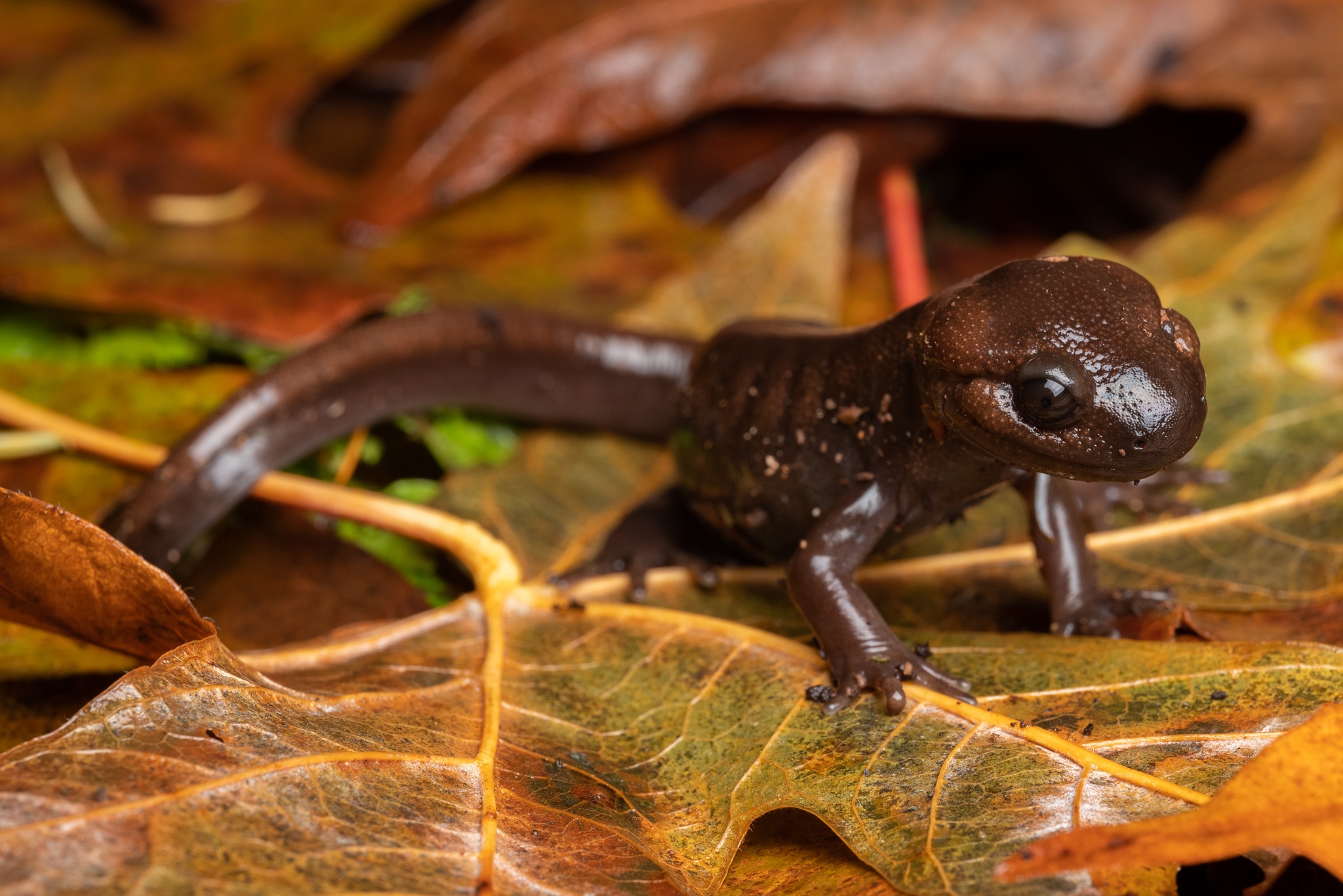
When you think of salamanders, you might imagine them near ponds or streams. But these amphibians, including the northwestern salamander, have a deep-rooted connection with the leaf layer, sometimes even in our backyards. These creatures are often elusive to the human eye and lead a mostly subterranean life, making rare appearances primarily during their spring breeding season.
But when temperatures drop during the winter, the northwestern salamander relies on the leaf layer for warmth. Acting as a natural insulator, the leaves prevent the soil where they live from freezing, ensuring the salamanders have a cozy refuge. This insulation is enhanced by the moisture retention and the heat produced from organic matter decomposition within the leaf layers.
And moisture is key. For amphibians, moisture isn’t just a preference—it’s a lifeline. Salamanders need a damp environment to breathe properly. The leaf layer ensures the soil remains moist, which not only aids in respiration but also helps in retaining heat, further safeguarding the salamanders from the cold.
The leaf layer is also treasure trove of invertebrates, providing salamanders with an abundant food source right at their doorstep. This means they can feast without expending too much energy searching for food.
Eastern Box Turtle

The eastern box turtle is a familiar sight for many nature enthusiasts in the east. But did you know that these turtles—and indeed all box turtles—have a profound relationship with the leaf layers in our gardens and forests?
Box turtles are usually active from April to October. As winter approaches, they begin their brumation—a form of hibernation specific to reptiles. Remarkably, their brumation takes place just below the soil surface, usually no deeper than 2 inches, and never exceeding 6 inches. A leafy blanket offers them the insulation they need to survive during this time. Even then, while the leaf layer offers significant insulation, these hardy creatures can withstand their body temperatures plummeting to a chilly 31 °F!
But box turtles have a penchant for the leafy floor regardless of the season. Whether it’s fallen leaves, tall grass, or weeds, these environments offer them shelter and a natural camouflage, making them nearly invisible to predators and the casual observer alike. Summer breeding efforts benefit from leaf camouflage, too—after laying their eggs in a soil depression, female box turtles may use the previous season’s leaves to cover and conceal their eggs.
Eastern Red Bat
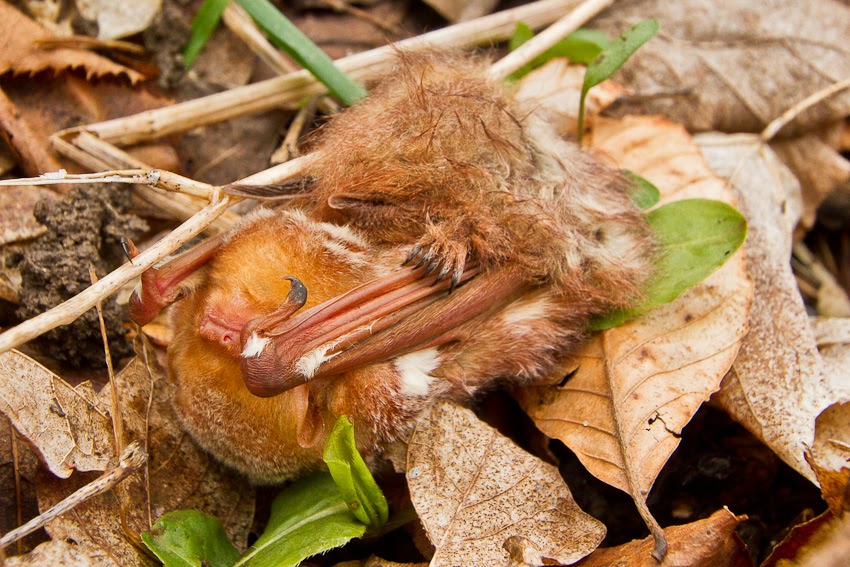
While many bat species migrate to warmer regions or seek out caves during winter, the eastern red bat has a more complex strategy when faced with plummeting temperatures. On milder days, they’re content to roost in trees, hanging amidst the foliage. But when winter’s grip tightens and temperatures hover around freezing, individual bats must make a choice: migrate away, or drop into the leaf layer and torpor on the ground.
Torpor is a state of reduced metabolic activity, a short-term hibernation of sorts, that allows animals to save energy during cold spells. For the eastern red bats that choose to stick around, the leaf layer becomes a sanctuary during this period.
Eastern red bats are more adapted to the cold than many other bat species, partially thanks to the large, heavily furred tail membrane they can use to wrap themselves in like a blanket once they’ve snuggled into the leaf layer. They can even survive body temperatures as low as 23 °F!
But why choose leaves over migration? The exact reasons remain a mystery to scientists. However, it’s believed that the frequency of sub-freezing temperatures plays a role in this decision, where they prefer to stick to the leaves if freezing is infrequent. With global temperatures rising, the leaf layer may only become more important to these charismatic bats.
Interestingly, when these bats do seek refuge in the leaf layer, they display a consistent preference: a south-facing slope. This choice is likely driven by the warmth associated with slopes facing the equator, which captures the sun’s heat more effectively.
Mourning Cloak

Butterflies are often associated with warm, sunny days. But have you ever wondered where they go when winter sets in? The answer is right underfoot.
In fact, dozens of butterfly species in the U.S. depend on the leaf layer for some part of their life cycle. Most, including the tiger swallowtail, spend their pupal stage in the leaf layer. Some—like the red-banded hairstreak—will even feed on the dead leaves themselves.
The mourning cloak, however, is one of only a few butterflies that overwinter in the leaves as adults. They find refuge in the within leaf layer, where insulation keeps out the frost. On those rare warm winter days, they may take to the skies. This unique strategy means that they are often the first and last butterflies spotted in the transitional seasons, especially in regions with higher latitudes and altitudes. Mourning cloaks have a penchant for tree sap, particularly from trees felled by beavers, and may also indulge in fermenting fruit and, only occasionally, nectar. This diverse and strange diet, which isn’t as reliant on summer flower nectar as many other species, likely plays a crucial role in their ability to tough out winter as adults.
Luna Moths
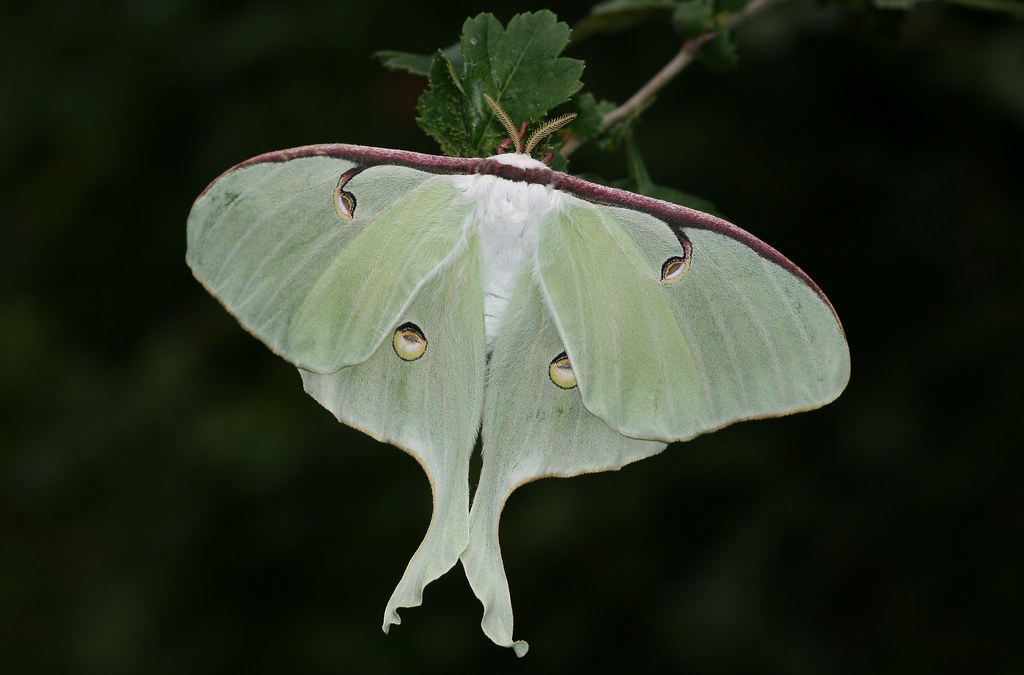
The Luna moth is often hailed as one of the most attractive moth species in the country. But beyond its mesmerizing beauty, this moth shares a deep bond with the fallen leaves of autumn.
Luna moths use the leaf layer for their winter hibernation during their pupal stage. The journey begins when female Luna lays her eggs on the leaves of a deciduous host plant, such as a white birch, walnut, hickory, or sumac. When the caterpillars hatch, they feast on these leaves, growing and preparing for the next phase of their life. When the time comes for metamorphosis, the Luna caterpillar spins a protective silk cocoon. Intriguingly, they incorporate the very leaves they’ve been feeding on into this cocoon. As autumn progresses and leaves begin to drop, the cocoon, securely wrapped in a leaf, falls to the ground. Here, amidst the accumulating leaf layer, it finds camouflage and protection, safely hidden away from potential predators.
The moisture retained within this leafy blanket is crucial for the moth’s development. In the absence of such a humid environment, pupating moths will lose weight rapidly and, once they emerge as adults, will produce fewer eggs. The Luna moth’s reliance on leaf layer is not an isolated phenomenon. An astounding 94% of moths drop off the tree when they develop as larvae, where they land among leaves, soil, and bark to pupate in cocoons!
Ovenbirds
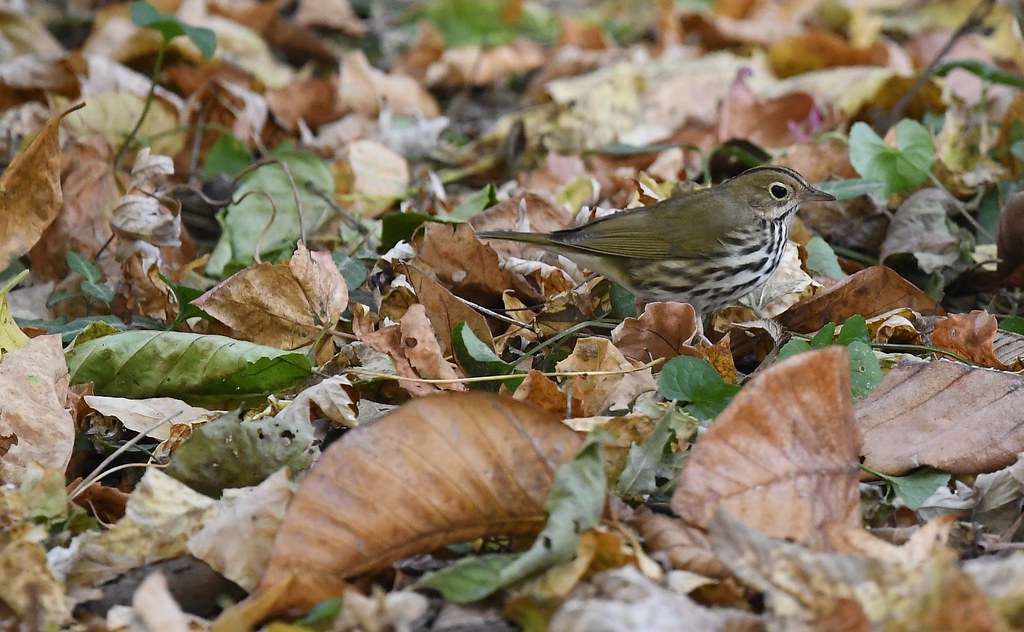
When we think of birds and nests, our minds often conjure images of intricately woven structures perched high in tree branches. But not all birds seek the treetops. Ovenbirds have a unique nesting strategy: they build their nests right on the ground, nestled in the leaf layer. Often, they even weave the fallen leaves into the very structure of their nests as camouflaging. The depth of the leaf layer plays a crucial role in their nesting success. The deeper the layer, the more concealed the nest becomes, reducing the chances of predators discovering their precious brood. As the nestlings age, the weight of their growing bodies causes the nest to sink deeper into the leaf layer, providing additional concealment.
But the relationship between Ovenbirds and leaf layer doesn’t end with nesting. These birds are avid insectivores, and the leaf layer serves as their primary hunting ground. The moist, warm environment of the leaf layer is a haven for a plethora of insects, providing Ovenbirds with a veritable buffet. Depending on the region, an astounding 66-95% of their diet comes from prey found within this layer. While Ovenbirds have a particularly special bond with the leaf layer, they aren’t the only birds that rely on ground-dwelling insects. Many birds, especially during spring, forage within this layer, seeking out the rich insect life it supports. In fact, about 95% of North American terrestrial birds rely on insects to some extent to rear their young. Unfortunately, terrestrial bird species dependent on such insect food have declined by a startling 2.9 billion individuals over the last 50 years, a 111-fold difference from species that do not depend on insects.
Yellow-faced Bumble Bee
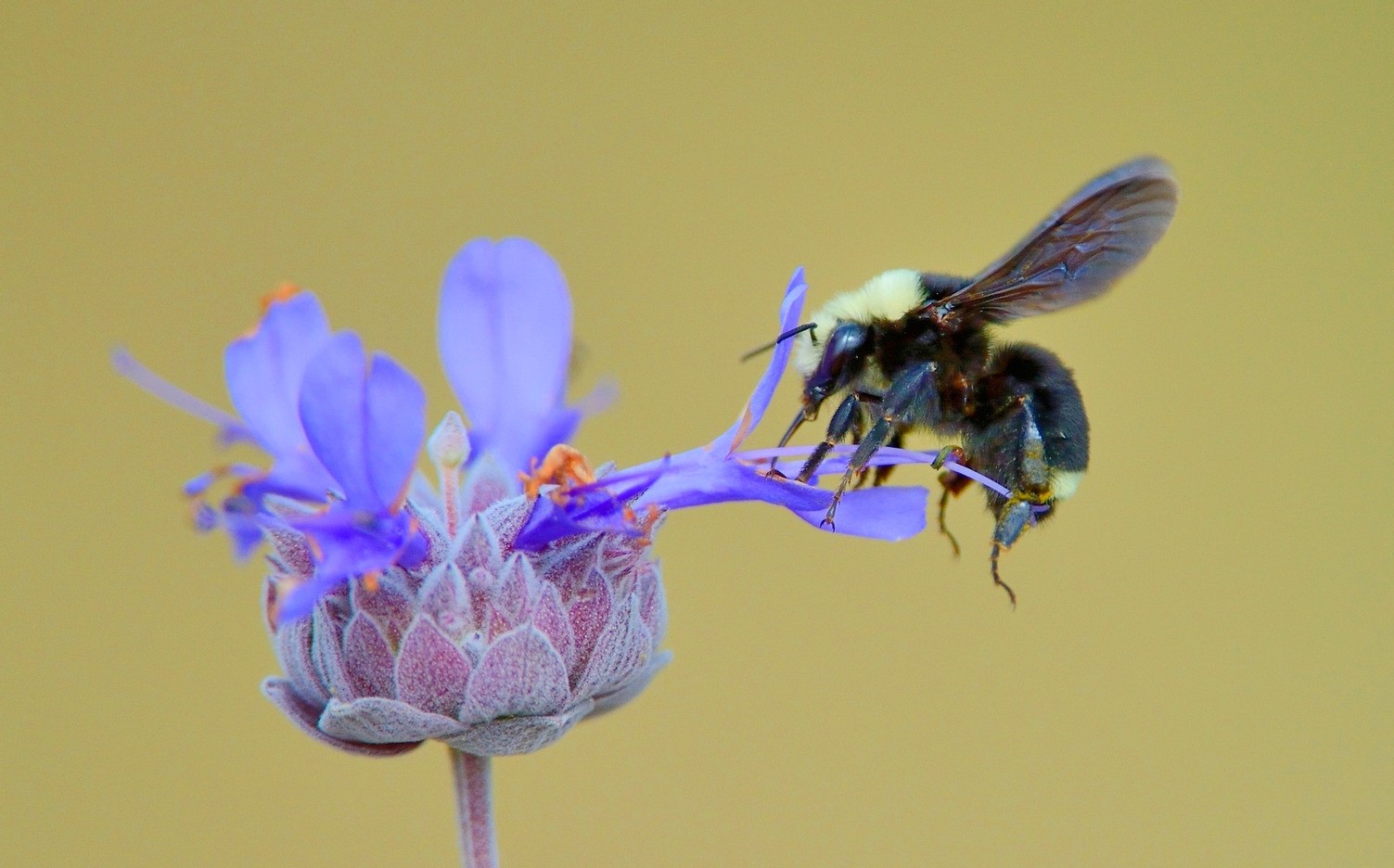
Bumble bees, including yellow-faced bumble bees, are a familiar sight in gardens and meadows. But there’s more to their story than meets the eye. These eusocial insects, like most other bumble bees, operate in small colonies that follow a one-year cycle. As summer fades and temperatures drop, a dramatic shift occurs within the colony.
Only newly mated queens are destined to see the next spring. The workers and males, having played their roles, will perish with the onset of winter.
For these new queens, survival hinges on finding a safe haven to endure the cold months. Their chosen sanctuary? The protective embrace of leaf piles. Here they hibernate, waiting for the world to warm again. Come mid-April to mid-May, they emerge, ready to establish new colonies and continue the cycle of life.
These queens don’t burrow deep into the earth. Instead, they nestle just a few inches below the surface. An insulating layer of leaves plays a crucial role in their survival strategy, shielding the ground from freezing temperatures. In areas where the leaf layer is sparse or absent, the chance of a queen successfully surviving winter diminishes rapidly. Each queen is responsible for establishing a new colony come spring, which can house up to 300 worker bees at a time. Thus, the loss of even a single overwintering queen can mean the absence of an entire colony the following year. Given that bumble bees are incredibly efficient pollinators—six times more so than honey bees in some cases—the potential impact on plant pollination is immense.
A Leafy Legacy
As we’ve journeyed through the intricate lives that thrives beneath the fallen leaves, it becomes evident that the leaf layer is not just nature’s refuse—it’s a lifeline for countless species. From the delicate metamorphosis of the Luna moth to the ovenbird’s buffet, each story underscores the profound impact of our simple garden choices. By choosing to leave the leaves, you can do your part to preserve crucial wildlife habitat.
Learn More!
Find out more about the benefits of fallen leaves in our on Leave the Leaves content series:
- Pro-Tips for Leaving the Leaves
- What to do With Fallen Leaves
- Why You Should Leave the Leaves
- Life in the Litter
- Six Excuses to Avoid Yardwork This Fall
- Five Simple Ways to Create Habitat This Fall
- Video: Five Tips on Leaving the Fall Leaves
Additional Sources
Claussen, D. L., Daniel, P. M., Jiang, S., & Adams, N. A. (1991). Hibernation in the Eastern Box Turtle, Terrapene c. carolina. Journal of Herpetology, 25(3), 334-341.
Dolbeer, R. A. (1971). Winter Behavior of the Eastern Box Turtle, Terrapene c. carolina. Copeia, 1971(4), 758-760.
Krishna, M. P., & Mohan, M. (2017). Litter decomposition in forest ecosystems: a review. Energy, Ecology and Environment, 2(4), 236-249.
Mola, J. M., & Williams, N. M. (2021). Bumble bees and forests: A review of the importance of forests for bumble bee conservation. BioScience, 71(9), 1018-1030.
Porneluzi, P., M. A. Van Horn, and T. M. Donovan (2020). Ovenbird (Seiurus aurocapilla), version 1.0. In Birds of the World (A. F. Poole, Editor). Cornell Lab of Ornithology, Ithaca, NY, USA.
Rhodes, C. J., Liburd, O. E., and Park-Brown, S. (2017). Pollination of Southern Highbush Blueberry by Managed Bees. EDIS, 2017(12), 1-9.




















